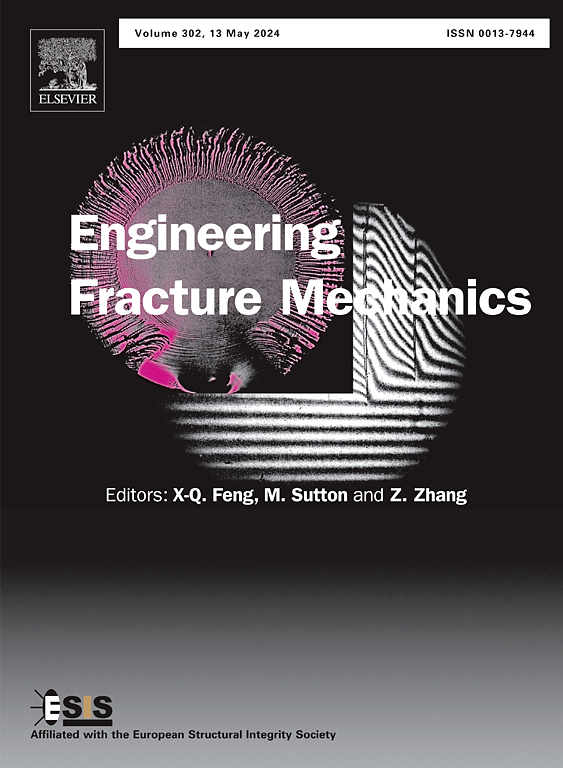Determination of fracture toughness of concrete based on actual critical crack length: Theoretical model and experimental validation
IF 4.7
2区 工程技术
Q1 MECHANICS
引用次数: 0
Abstract
The fracture toughness of concrete is a critical parameter for the evaluation of the stability of cracks and the subsequent safety of structures. However, the parameter is typically underestimated when it is calculated by substituting the effective critical crack length into linear elastic fracture mechanics formulas, thereby impeding the ability to conduct a reasonable assessment of the safety of structures. In light of the above, this study develops a theoretical model for determining the fracture toughness of concrete based on the actual critical crack length. Firstly, the theoretical foundation for the model is elucidated, and governing equations are formulated based on the competition mechanism of the crack propagation resistance and the driving force. These equations can be used to solve the peak load, actual critical crack length, and fracture toughness. Subsequently, to verify the effectiveness of the model, fracture tests of wedge splitting specimens are performed, and the actual critical crack length is captured using the digital image correlation method. The fracture toughness calculated with the proposed model is then compared with the results measured by the authors and collected form the literature. The findings demonstrate that the fracture toughness calculated using the proposed model correlates well with experimental outcomes. Therefore, it can be concluded that the proposed model can be applied to predict the fracture toughness of concrete when the requisite material parameters, including the tensile strength, fracture energy, Young’s modulus, and initial fracture toughness, are provided. This model offers the advantage of considering the actual critical crack length, which would be difficult to measure directly due to the higher demands on the test equipment. It is anticipated that the investigation will facilitate a comprehensive insight into the fracture mechanism of concrete and an accurate estimation of the mechanical performance of concrete structures.
根据实际临界裂缝长度确定混凝土的断裂韧性:理论模型和实验验证
本文章由计算机程序翻译,如有差异,请以英文原文为准。
求助全文
约1分钟内获得全文
求助全文
来源期刊
CiteScore
8.70
自引率
13.00%
发文量
606
审稿时长
74 days
期刊介绍:
EFM covers a broad range of topics in fracture mechanics to be of interest and use to both researchers and practitioners. Contributions are welcome which address the fracture behavior of conventional engineering material systems as well as newly emerging material systems. Contributions on developments in the areas of mechanics and materials science strongly related to fracture mechanics are also welcome. Papers on fatigue are welcome if they treat the fatigue process using the methods of fracture mechanics.

 求助内容:
求助内容: 应助结果提醒方式:
应助结果提醒方式:


